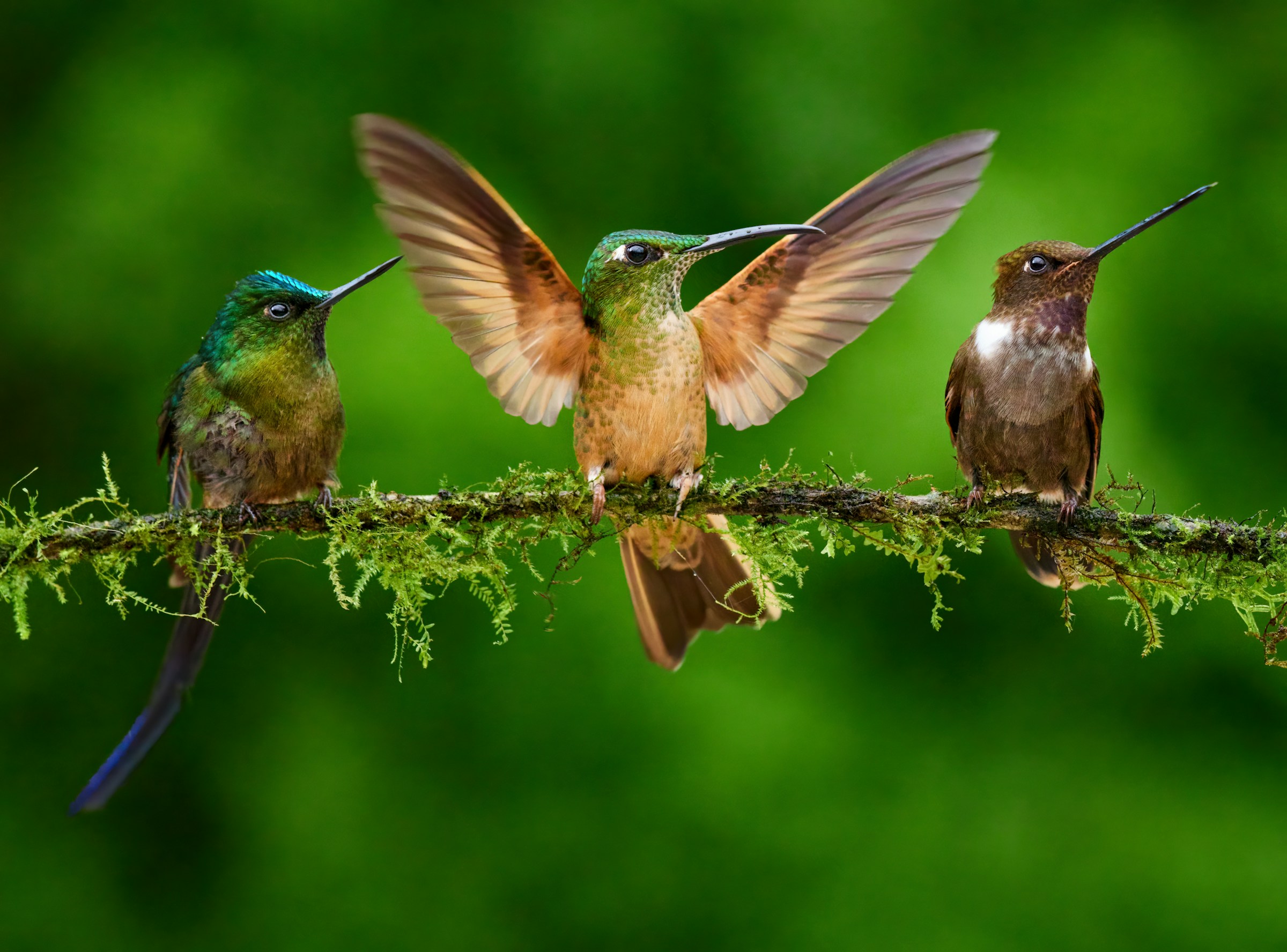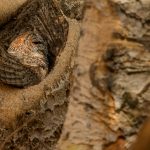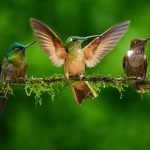Urban planners face the challenge of balancing development with ecological sustainability. Creating bird-friendly environments is essential for preserving biodiversity in UK cities. Innovative strategies can transform urban landscapes into havens for birds while enhancing residents' quality of life. This guide explores practical initiatives, from green roofs to community gardens, that support avian populations. Join us in discovering how thoughtful planning can foster coexistence between urban development and nature, ultimately enriching our cities.
Importance of Bird-Friendly Urban Planning
Urban planning plays a crucial role in promoting biodiversity within cities, especially when it comes to creating bird-friendly environments. By integrating sustainable design principles, cities can enhance their ecosystems, providing habitats that support diverse bird populations. This not only benefits the birds but also contributes to the overall health of urban ecosystems.
A lire également : Transform Your Garden into a Sanctuary: Protecting Stag Beetle Populations in the UK
Bird-friendly cities are designed with features such as green roofs, native plant gardens, and bird-safe building materials. These elements help to create environments where birds can thrive. In turn, birds contribute to urban biodiversity by pollinating plants, controlling pests, and providing aesthetic and recreational value to city dwellers.
The benefits of bird-friendly environments extend beyond ecological advantages. They also improve the quality of life for residents by promoting cleaner air, reducing noise pollution, and fostering a connection with nature. As urban areas continue to expand, it is vital to prioritize bird-friendly planning to maintain and enhance biodiversity.
Avez-vous vu cela : Engaging Young Minds: Innovative Ways British Schools Can Inspire Kids to Conserve Local Wildlife
Recent trends indicate a decline in bird populations in many urban areas, highlighting the need for immediate action. By adopting bird-friendly urban planning practices, cities can reverse these trends and create vibrant, sustainable communities for both humans and wildlife.
Key Strategies for Creating Bird-Friendly Environments
To create bird-friendly environments, urban planning must incorporate innovative strategies. One effective approach is the integration of green infrastructure, such as green roofs and walls, into urban designs. These elements provide essential habitats and nesting sites for various bird species, contributing significantly to habitat enhancement.
Designing parks and green spaces that attract bird species is another crucial strategy. By incorporating diverse plantings and water features, urban planners can create inviting environments for birds. These spaces not only support bird populations but also offer recreational opportunities for city residents, fostering a deeper connection with nature.
Utilizing native plants is fundamental to supporting local bird populations. Native flora provides food and shelter that are well-suited to the needs of indigenous bird species. By prioritizing native plants in landscaping, urban areas can enhance biodiversity and create sustainable ecosystems.
Key strategies in urban planning, such as habitat enhancement and green infrastructure, are essential for promoting bird-friendly environments. By focusing on these strategies, cities can support diverse bird populations while improving the quality of life for their residents. Through thoughtful design and planning, urban areas can become vibrant, sustainable communities for both humans and wildlife.
Successful Case Studies in the UK
Exploring successful urban projects in the UK reveals effective bird-friendly initiatives that cities can emulate. These case studies highlight how thoughtful urban planning can foster biodiversity and enhance urban environments.
Overview of Notable Projects
Several UK cities have implemented noteworthy bird-friendly initiatives. For instance, London’s Wetland Centre transformed a former reservoir into a thriving habitat, attracting numerous bird species. In Manchester, the City of Trees project focuses on planting trees in urban areas, creating green corridors that support bird populations. These projects demonstrate the potential of urban planning to create sustainable bird-friendly environments.
Analysis of Outcomes
These initiatives have yielded significant benefits. London's Wetland Centre, for example, has become a haven for birdwatchers and a critical site for avian research. In Manchester, increased tree cover has improved air quality and provided essential nesting sites for birds. These outcomes underscore the value of integrating bird-friendly initiatives into urban planning.
Lessons Learned for Future Projects
Successful case studies offer valuable insights for future projects. Prioritizing native plants, creating diverse habitats, and engaging communities are crucial elements. By learning from these initiatives, cities can develop effective strategies to promote biodiversity and create vibrant, sustainable urban environments.
Expert Insights on Bird-Friendly Design
Understanding the intricacies of bird-friendly urban design requires insights from experts in the field. Interviews with urban planners specializing in biodiversity highlight the importance of integrating ecological design principles. These professionals emphasize the need for creating interconnected green spaces that serve as both habitats and corridors for bird movement.
Ornithologists provide valuable insights into the specific habitat requirements of various bird species. They recommend incorporating a mix of native plants, water sources, and nesting sites to accommodate diverse avian needs. This approach ensures that urban environments can support both common and rare bird species, contributing to overall biodiversity.
Experts unanimously agree on several key recommendations for integrating bird-friendly features into urban planning:
- Prioritize native vegetation to provide food and shelter.
- Design buildings with bird-safe materials to prevent collisions.
- Incorporate water features to attract birds and support their hydration needs.
By following these expert recommendations, cities can effectively enhance their ecosystems and promote the well-being of bird populations. Such strategic planning not only benefits birds but also enriches urban environments, making them more vibrant and sustainable for all inhabitants.
Guidelines for Urban Planners
Creating a bird-friendly city requires careful planning and adherence to specific planning guidelines. Urban planners can follow a step-by-step guide to assess urban areas for potential bird habitats. This begins with mapping existing green spaces and identifying areas that can benefit from habitat enhancement. Planners should evaluate the current biodiversity and pinpoint regions lacking in avian-friendly features.
Recommended Policies and Practices
To promote bird-friendly designs, implementing best practices is crucial. Policies should encourage the use of native plants and the integration of green roofs and walls. Urban planners must ensure that building regulations include bird-safe materials to prevent collisions. Zoning laws can be adjusted to prioritize the development of green corridors, facilitating bird movement across urban landscapes.
Tools and Resources
Urban planners have access to numerous tools and resources to aid in the implementation strategies of bird-friendly environments. Geographic Information Systems (GIS) can help map and analyze potential habitats, while biodiversity databases provide essential data on local bird species. Collaboration with ornithologists and ecologists offers valuable insights into designing effective habitats. By utilizing these resources, urban planners can create thriving ecosystems that support both avian and human communities.
Visualizing Bird-Friendly Urban Layouts
Incorporating urban design visuals is essential for effective bird-friendly urban planning. These visual aids, such as maps and diagrams, help planners conceptualize and communicate the integration of green spaces and corridors that support avian life. By illustrating potential layouts, urban planners can better assess the feasibility of proposed designs and ensure that biodiversity is prioritized.
Maps, for instance, can pinpoint existing green spaces and identify opportunities for habitat enhancement. Diagrams illustrating bird-friendly designs often highlight features like green roofs, native plant gardens, and water features. These visuals not only aid planners but also engage communities by providing a tangible representation of future urban landscapes.
Biodiversity statistics further reinforce the importance of these designs. Studies show that cities with higher biodiversity levels experience improved air quality, reduced noise pollution, and enhanced mental well-being for residents. For example, urban areas with diverse bird populations have been linked to increased pollination rates and natural pest control, benefiting both the environment and human inhabitants.
By leveraging urban design visuals and biodiversity statistics, cities can create more sustainable and vibrant environments, fostering a harmonious coexistence between humans and wildlife.






